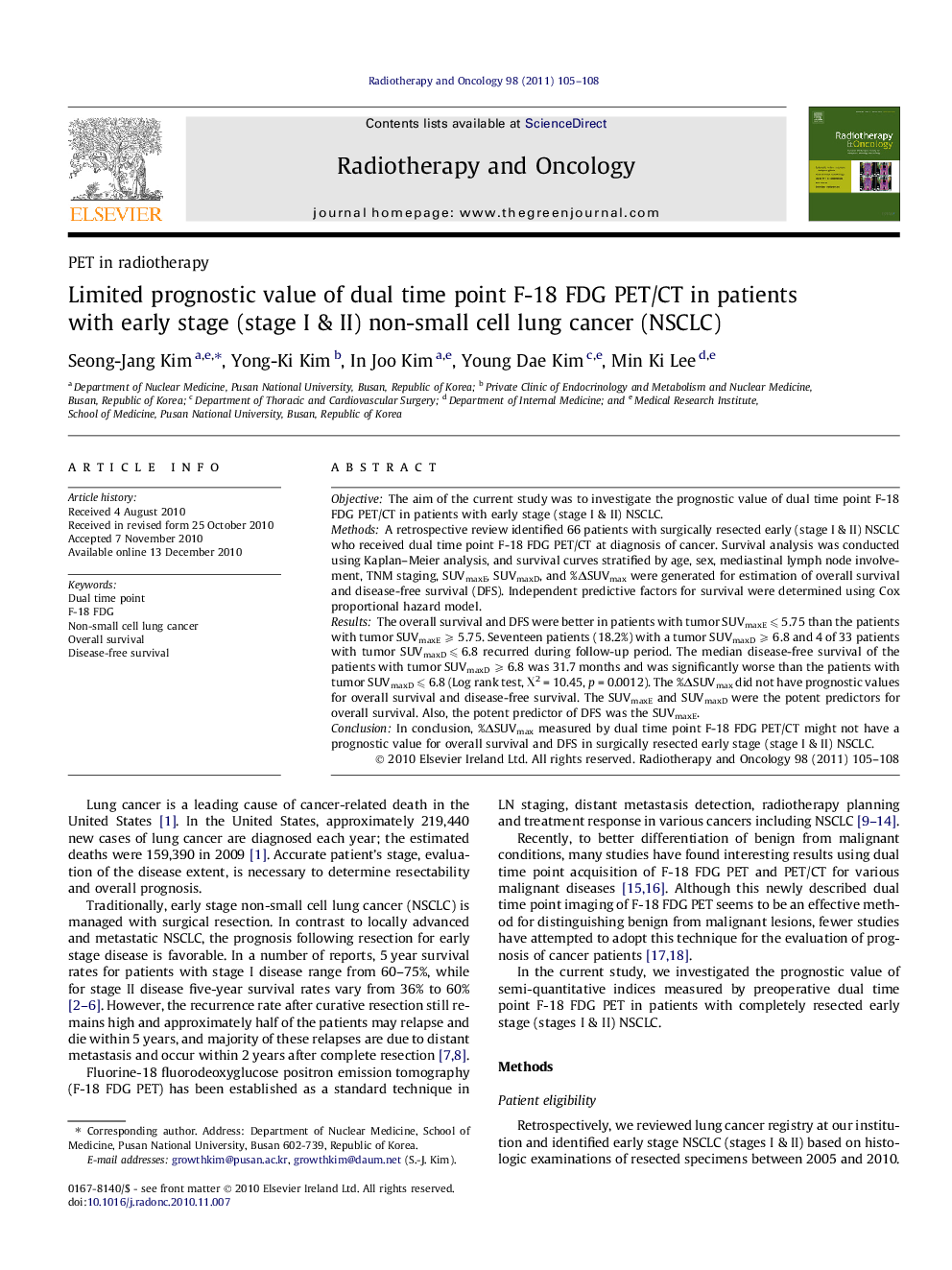| کد مقاله | کد نشریه | سال انتشار | مقاله انگلیسی | نسخه تمام متن |
|---|---|---|---|---|
| 2158674 | 1090841 | 2011 | 4 صفحه PDF | دانلود رایگان |

ObjectiveThe aim of the current study was to investigate the prognostic value of dual time point F-18 FDG PET/CT in patients with early stage (stage I & II) NSCLC.MethodsA retrospective review identified 66 patients with surgically resected early (stage I & II) NSCLC who received dual time point F-18 FDG PET/CT at diagnosis of cancer. Survival analysis was conducted using Kaplan–Meier analysis, and survival curves stratified by age, sex, mediastinal lymph node involvement, TNM staging, SUVmaxE, SUVmaxD, and %ΔSUVmax were generated for estimation of overall survival and disease-free survival (DFS). Independent predictive factors for survival were determined using Cox proportional hazard model.ResultsThe overall survival and DFS were better in patients with tumor SUVmaxE ⩽ 5.75 than the patients with tumor SUVmaxE ⩾ 5.75. Seventeen patients (18.2%) with a tumor SUVmaxD ⩾ 6.8 and 4 of 33 patients with tumor SUVmaxD ⩽ 6.8 recurred during follow-up period. The median disease-free survival of the patients with tumor SUVmaxD ⩾ 6.8 was 31.7 months and was significantly worse than the patients with tumor SUVmaxD ⩽ 6.8 (Log rank test, Χ2 = 10.45, p = 0.0012). The %ΔSUVmax did not have prognostic values for overall survival and disease-free survival. The SUVmaxE and SUVmaxD were the potent predictors for overall survival. Also, the potent predictor of DFS was the SUVmaxE.ConclusionIn conclusion, %ΔSUVmax measured by dual time point F-18 FDG PET/CT might not have a prognostic value for overall survival and DFS in surgically resected early stage (stage I & II) NSCLC.
Journal: Radiotherapy and Oncology - Volume 98, Issue 1, January 2011, Pages 105–108